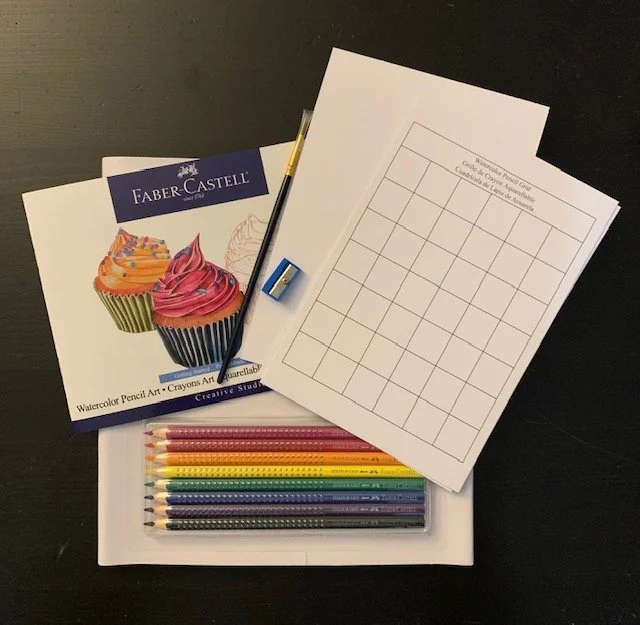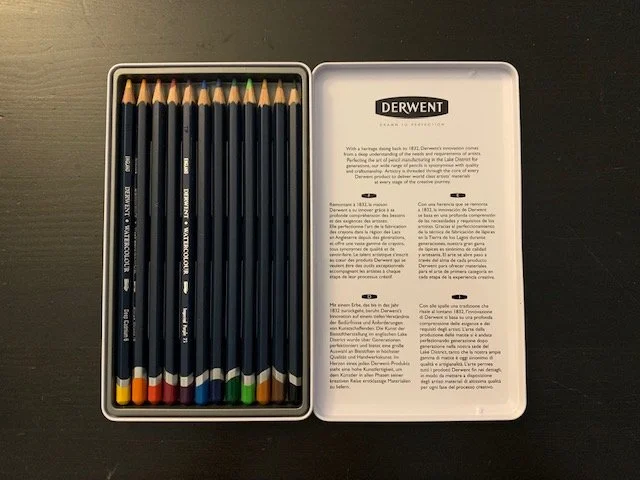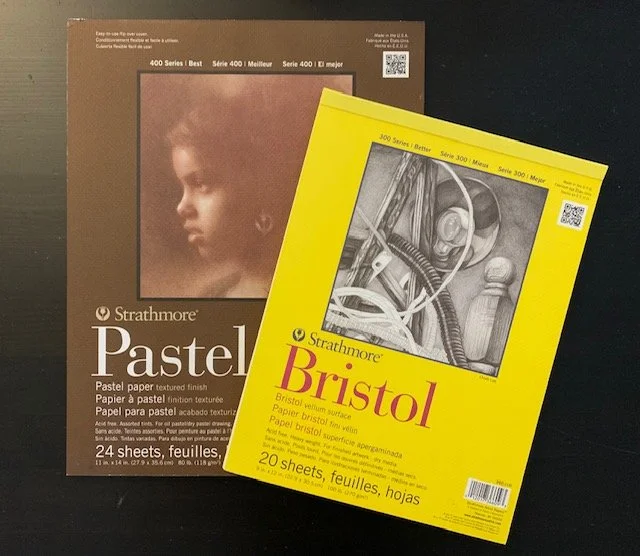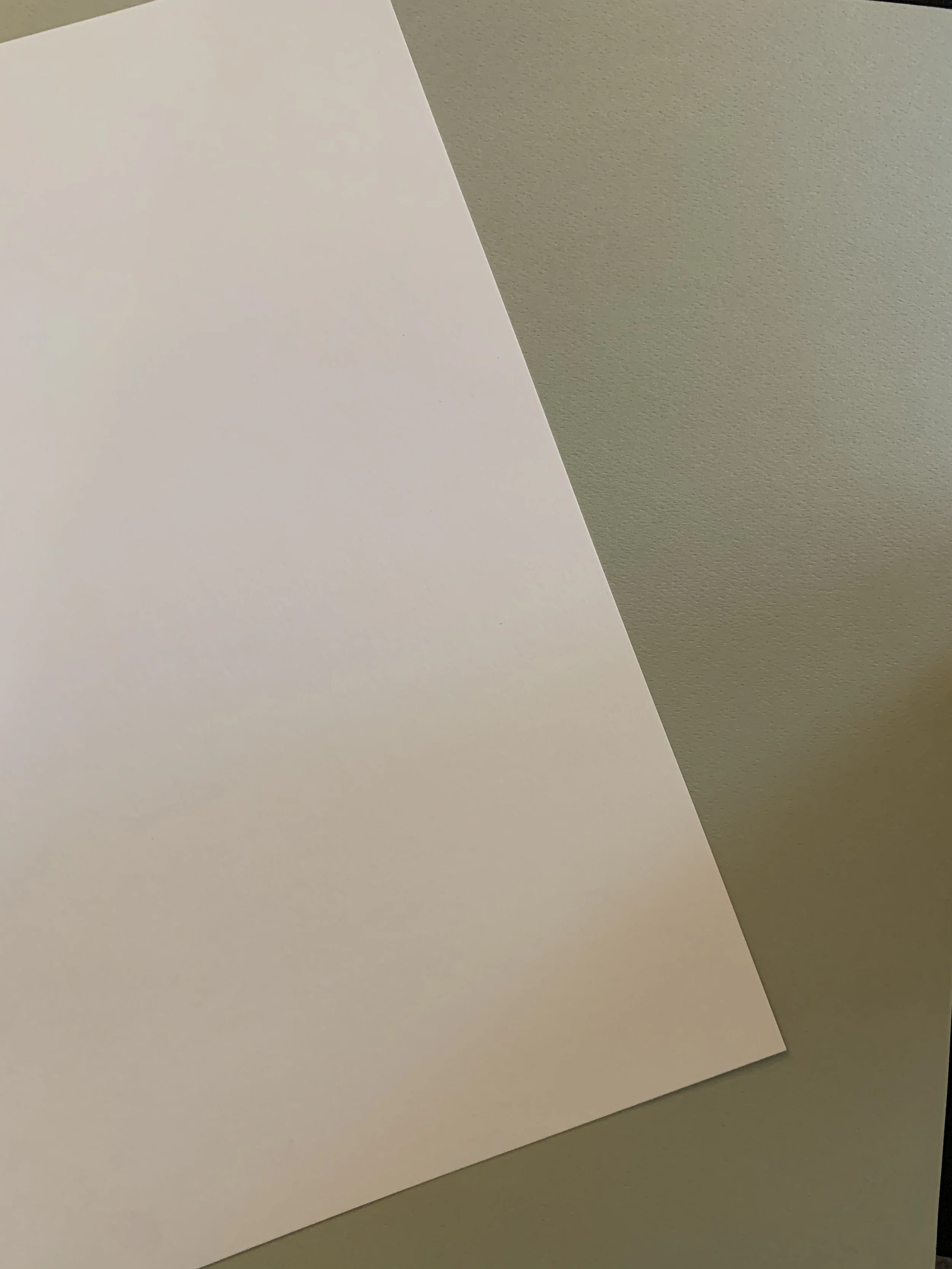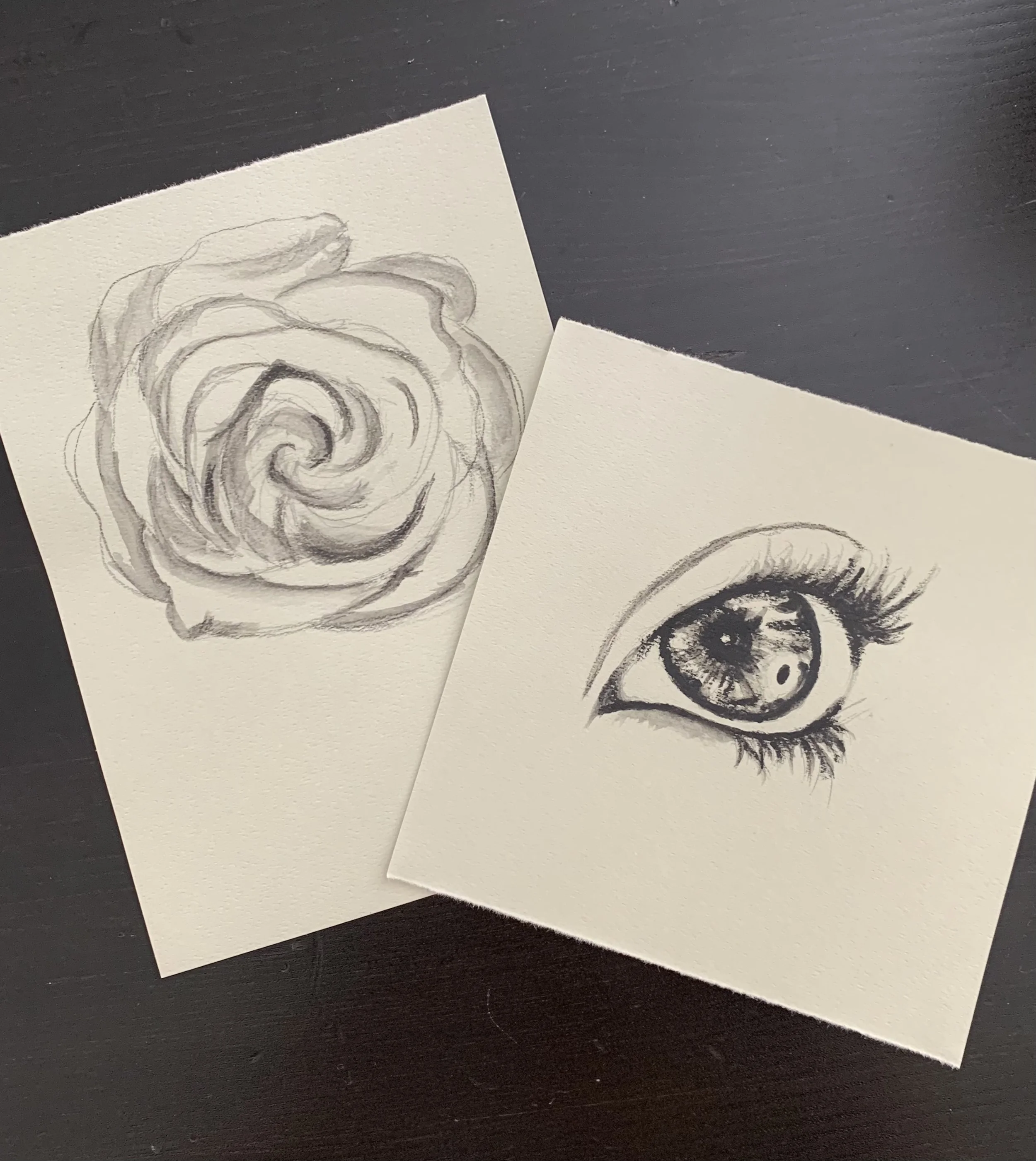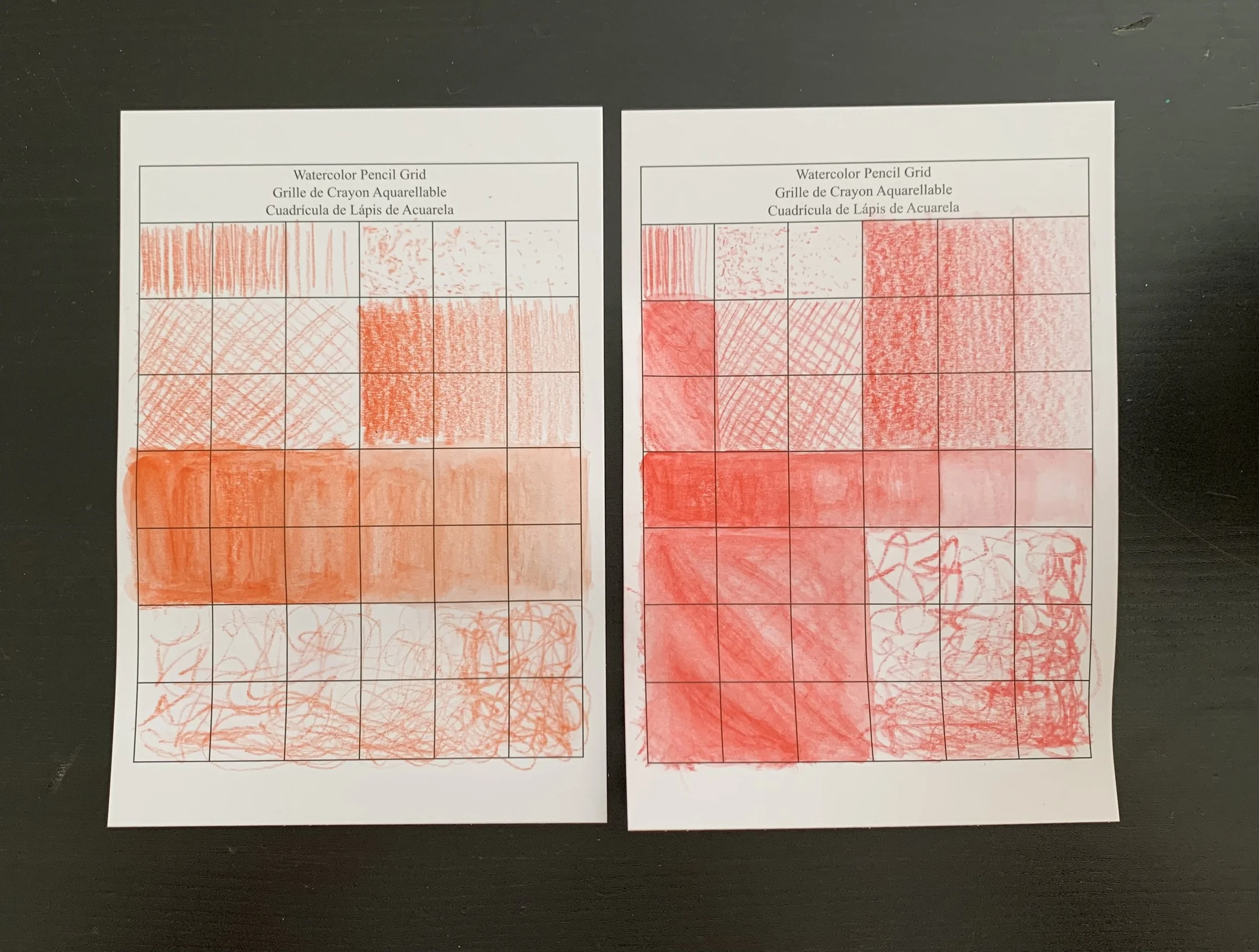Studio Blog Post #3: Watercolor Pencils
Watercolors, in general, have been a point of interest of mine for some time. However, I have always found myself intimidated to use this media due to prior experiences, where I would find it difficult to blend and/or I found myself unsure of how much water should be applied. But, for this post, I decided to revisit watercolors, specifically through watercolor pencils via brand comparisons.

Faber-Castel vs. Derwent
Faber-Castel -
Price: $20.40; kit comes with watercolor paper, 8 watercolor pencils, watercolor paper with grid, sharpener, paintbrush
Level: Beginner; good for ages 10+ (requires a decent amount of patience)
Derwent -
Price: $12.30; tin of 12 watercolor pencils
Level: Professional; pigment was different and requires a lot of patience due to amount of blending and/or layering needed to build up contrast
Exploration Materials
Starting from left to right and downwards, are images showing the various materials I’ve used for this exploration. As suggested in Mary Hafeli’s book, Exploring Studio Materials, I tested the media with different weighted papers - both heavy and light -, specifically Bristol (white) board, pastel paper (gray) and the provided watercolor paper. The text also instructed to try different application methods, utilizing the pencils, brush and various amounts of water (Hafeli 52). The video below shows the pencil being dipped in water to apply the color which I found to be one of the most interesting applications throughout this whole assessment, although somewhat challenging because there was a bit of resistance as the pencil becomes dry fairly quick.
Experience
This overall exploration was a lot of fun, despite me finding watercolors still fairly difficult to master. Both brands produced quality pigments and were easy to use when executing various assessments. I believe it’s a matter of learning control in the amount of water applied, as well as pressure when using both the brush and pencil. Fluidity was another aspect I noticed; the color can essentially be pushed outwards which allows you to create gradients with “ease”.
